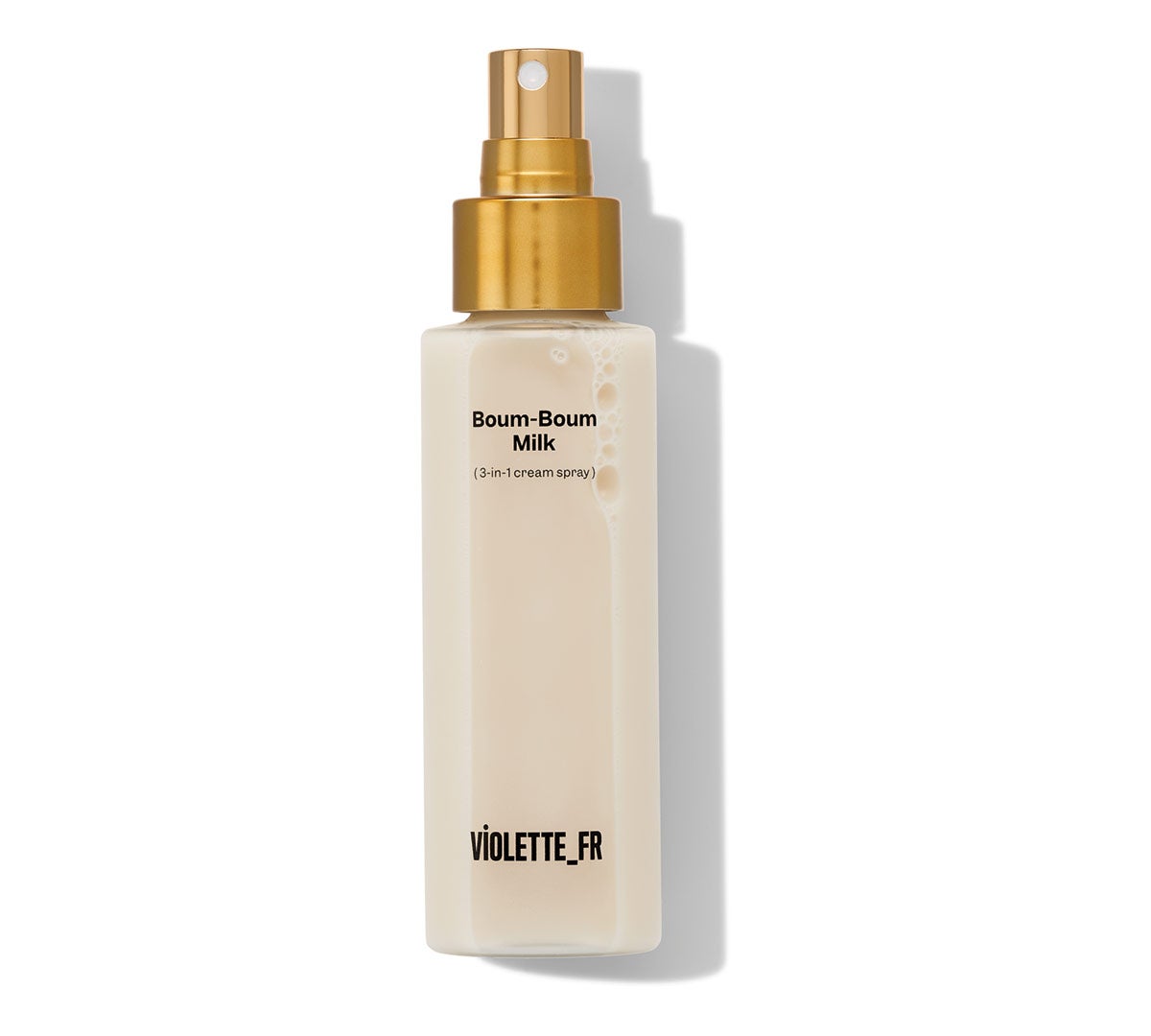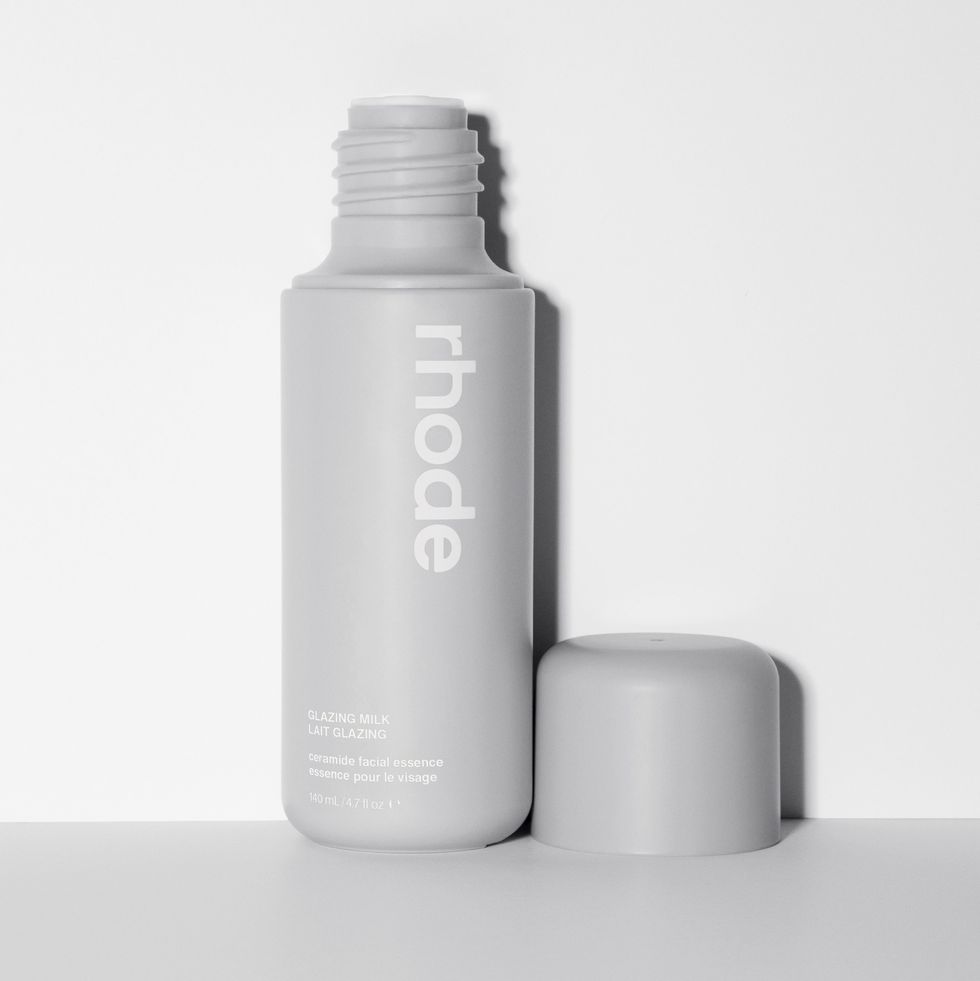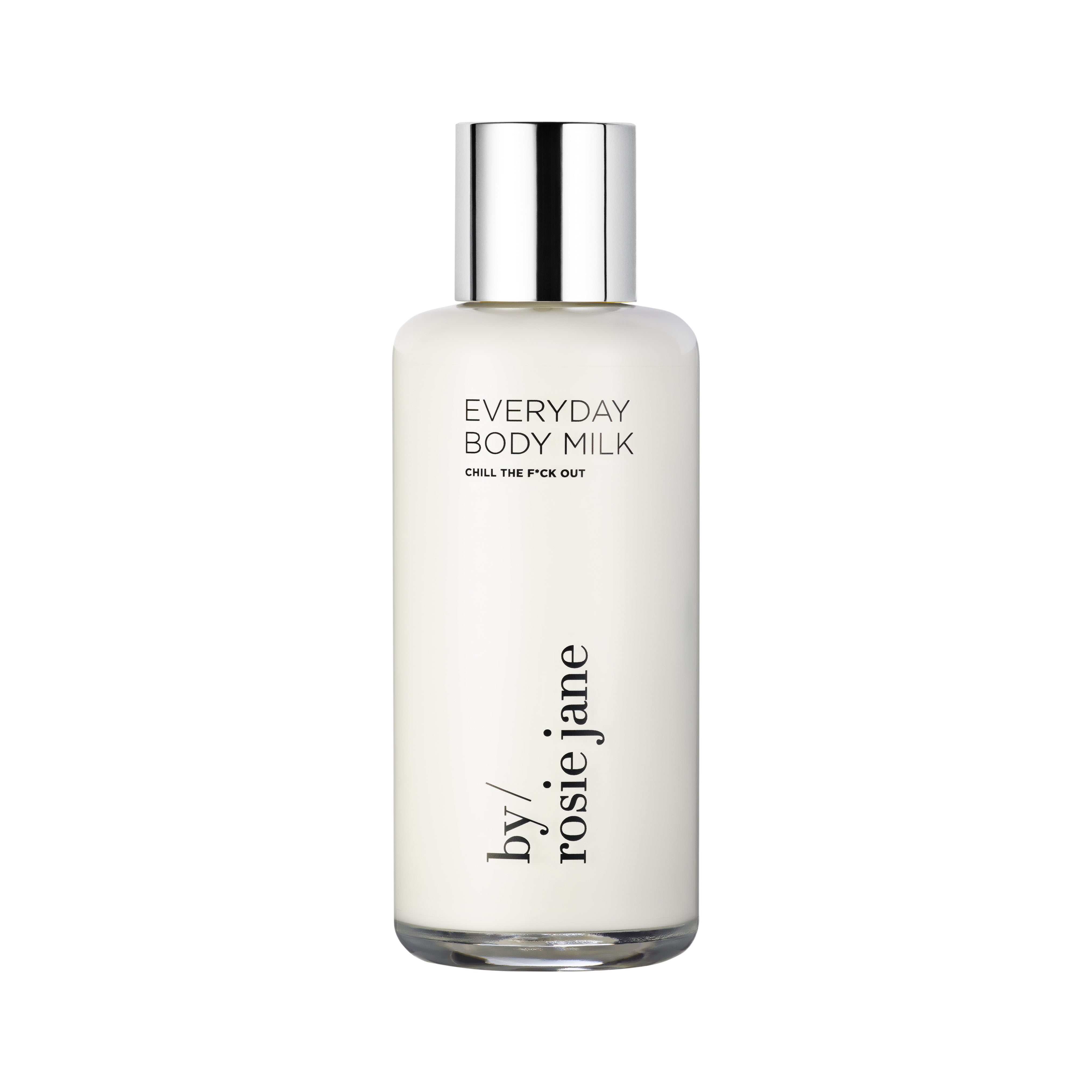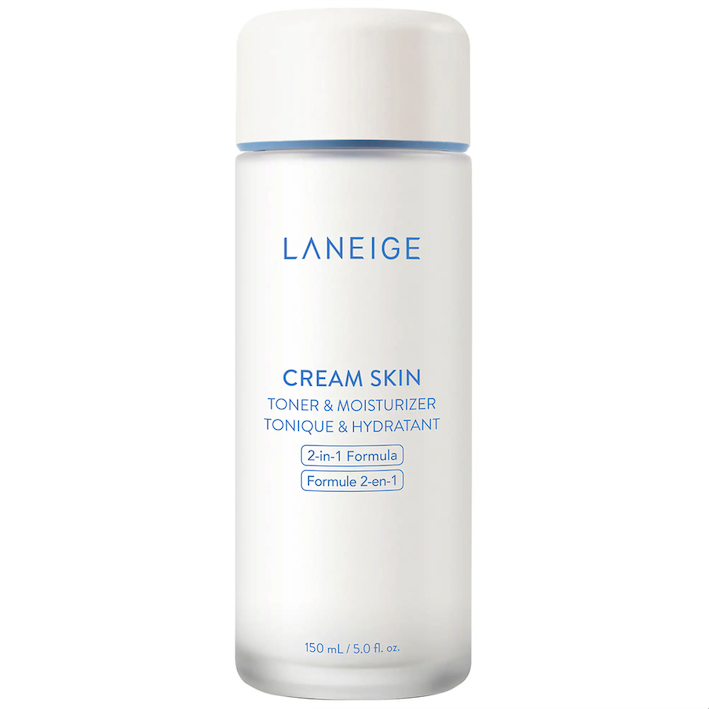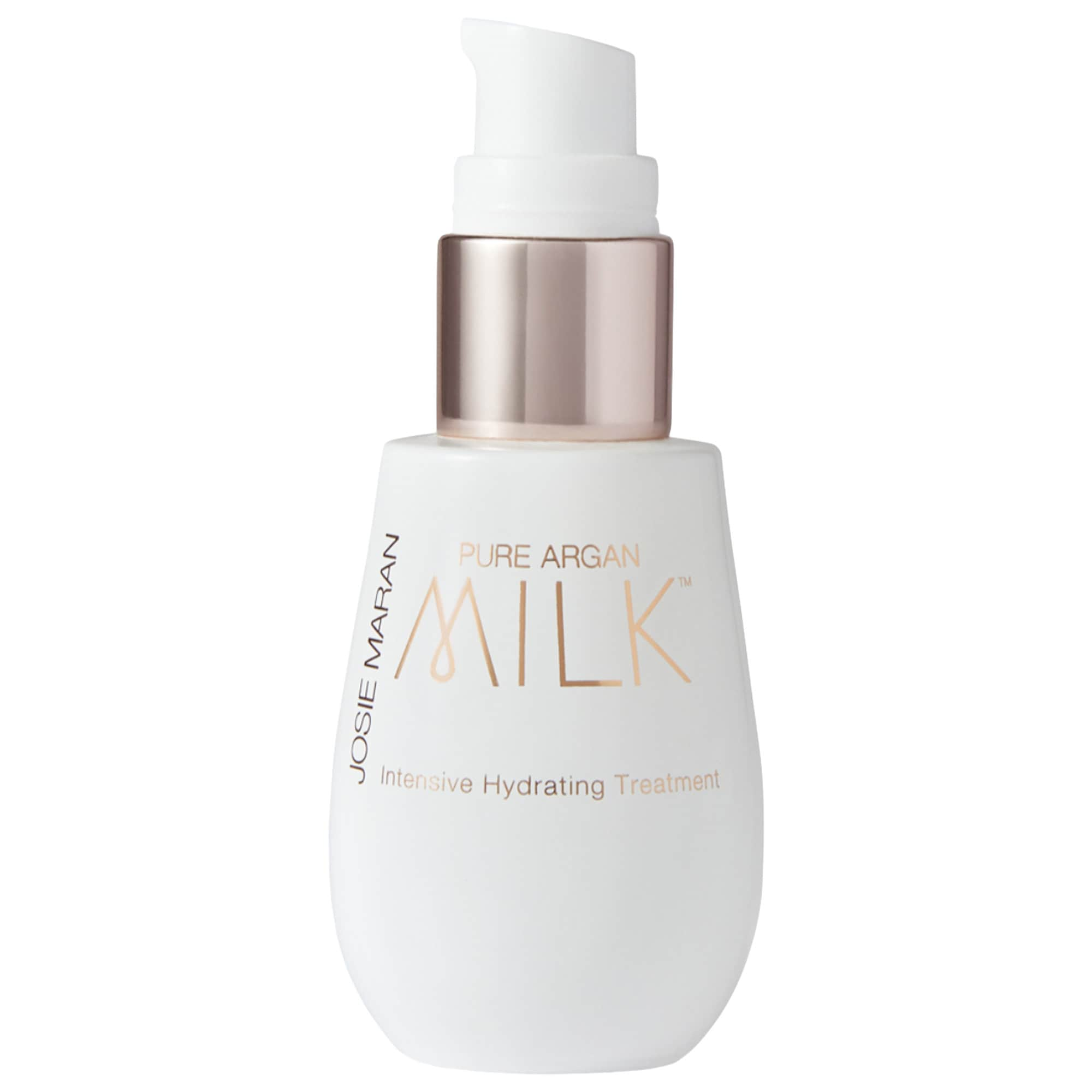It's been said that Cleopatra used to bathe in donkey milk for the skin-care benefits: Milk contains naturally-occurring lactic acid, which both exfoliates and hydrates the skin. As an AHA (alpha-hydroxy acid), lactic acid helps promote the shedding of dead skin cells; as a component of the skin’s natural moisturizing factor, it helps it retain moisture, too.
Nowadays, we don't take milk baths; many of us don't even drink it. That said, it's possible that you're using a milk protein or lactic acid somewhere in your skin-care routine, for the very same reasons the Egyptian monarch did. It's even more likely that you've been seeing "milk" or "milky" on skin-care labels at an increasing rate, and probably caught Hailey Bieber's Got Milk? IG campaign to promote Rhode's brand-new Glazing Milk Ceramide Essence, the latest launch from Bieber’s beauty brand. Maybe you thought, Wait, what's milk got to do with it?
AdvertisementADVERTISEMENT
The trend towards milk is not just a Bieber influence. In May 2021, French beauty brand Violette_FR launched Boum-Boum Milk, a cream spray that essentially combines a serum, toner, and moisturizer (the chic Parisian makeup artist behind the eponymous brand even uses it as a hair detangler). This summer, fragrance brand By/Rosie Jane launched body milk, a liquid lotion that adds hydration to the skin without a heavy emollient. Founder Rosie Jane Johnston, an Australian expat, explained that she'd love to see liquid lotions, like skin milks, better understood by an American consumer most familiar with traditional body creams and butters.
Essentially, the vibe is lightweight layers of hydration — and we're starting to sense a product trend. As we enter a summer of skin milk, we have a few questions: Mainly, what is it (not actual milk, right?), and is it worth buying for better skin?
What is skin milk?
According to dermatologists, a designated skin milk, as it's used today, is most commonly a marketing term to describe a product that resembles milk. "'Milk' describes the consistency and lightweight nature of these products, similar to that of milk," says dermatologist Michael Jacobs, MD. "While sometimes there can be milk-adjacent ingredients, such as lactic acid, there is typically no actual milk in them."
However, some skin-care products do contain milk proteins. "Beekman 1802 has an entire line that uses goat milk," offers Shereene Idriss, MD, a board-certified dermatologist and founder of #PillowtalkDerm. "Some products have milk proteins or even compounds found in milk, but [are] derived from vegan alternatives," such as centella milk, rice milk, linseed milk, and almond milk extract, which is found in Kiehl’s Milk-Peel Gentle Exfoliating Toner. "Most [brands] use plant-based milks and components that are found in milk: lactic acid, antioxidants, calcium, and vitamin B," says dermatologist Rachel Nazarian, MD. "The 'milk'-based marketing often [shows] the milky, creamy appearance of the product, and highlights the hydrating, soothing potential."
AdvertisementADVERTISEMENT
For the most part, a milky appearance comes from non-dairy sources. According to Dr. Idriss, certain commonplace skin-care ingredients, like marshmallow root, white tea, birch sap, certain ferments, or even coconut water, can be used to create a "white and cloudy liquid appearance," much like a milk.
What are the benefits of using skin milk?
Dr. Nazarian describes skin milk as a "multitasker" in that it often combines gentle exfoliation with hydration in a lightweight form. "I find it works best for people with sensitive skin who want to have an element of exfoliation, but want it bundled in a soothing, calming, and hydrating package," she explains. "Classic lotions and creams often use only ingredients that either draw hydration into the skin or prevent evaporation of hydration from skin to the surrounding environment.”
Because of the lightweight, watery nature, skin milk feels lighter on the skin and often absorbs faster than a traditional cream. "Skin milks provide lightweight hydration," says New York-based dermatologist Brendan Camp, MD. "They are a great option for keeping skin hydrated in summer months when heavier products can feel more occlusive."
Another benefit? According to Dr. Nazarian, skin milks are generally well-tolerated by all skin types because they're designed to be gentle and soothing. However, as many of these products are made with plant proteins, it's important to check the label and patch test to make sure you don't have an allergy to a specific ingredient.
How should I use skin milk?
Think of a skin milk like a skin essence or a prep layer, to be used after a cleaner or toner but before a heavier serum or moisturizer. As with any skin-care routine, you want to start off with the lightest products and work your way up. "It can be a part of your daily routine since it is so light and absorbing," says Jeannette Graf, MD, a board-certified dermatologist and Assistant Clinical Professor of Dermatology at Mt. Sinai School of Medicine. For daytime use, you could follow a skin milk-inclusive routine in this order: cleanser, skin milk, moisturizer, and sunscreen.
AdvertisementADVERTISEMENT
You might even be able to use skin milk to streamline your routine even further. "Some skin milk products can function as a toner, serum, and moisturizer," explains Dr. Camp (as is the case with the aforementioned Boum-Boum Milk spray, which contains fermented birch sap, squalane, and glacial water). Generally, toners are meant to be used after a cleanser to help remove excess oil and debris, balance the pH of the skin, and prepare it for the application of additional skin-care products. The common concern with traditional toners is that they can be drying. Essences, often applied after or in place of toners, are water-based, lightweight products with the purpose of delivering intense hydration to the skin. Something that is a milky essence or toner — with exfoliating and hydrating benefits — could presumably do both.
If you're talking about body milk, the guidance is to pour it into your hands and massage it into your skin, like you would a lotion. Dr. Camp recommends doing this post-shower. "When using skin milk to improve skin hydration, it is best applied after a shower while the skin is slightly damp so that it seals in water," he explains. (Alternatively, you could bathe in Collosol Eau de Lait like Karl Lagerfeld reportedly did, but that's not the most economical move.)
What skin milks do you recommend?
Personally, I'm a fan of Violette_FR Boum-Boum Milk. If I'm feeling lazy at night, I'll wash my face (always), spray this stuff all over, and massage it into my skin, which drinks it up. I can go to bed feeling hydrated, but not sticky or oily. Sometimes I'll use it during the day as a prep before sunscreen, cutting out my serum and moisturizer. When the weather is warm and I don't want heavy moisturizers on my face, this is something I do more frequently. Bonus: Because it's a spray, it's easy to get the "milk" on my neck and chest area, which I'm prone to forgetting.
AdvertisementADVERTISEMENT
For my body, I’m loving By/Rosie Jane Body Milk, which comes in what looks like a small glass milk bottle and pours out like an essence. The formula has aloe vera, witch hazel, and cucumber but smells like grapefruit and eucalyptus. There’s also a nighttime scent that incorporates lavender and neroli. (By/Rosie Jane is primarily a fragrance brand, so I’m not surprised the scent is light and lovely.) I should mention that none of these “milk” products actually smell like something you might drink.
In the summer especially, I much prefer body milk to lotion. Like a toner, it sinks into my skin on contact, so there’s no sticky feeling or dry-down time as with a traditional lotion or cream or butter, and I can get dressed right away. My skin feels better, too: I’ve noticed that my shoulders and arms, which are chronically dry and sometimes smattered with keratosis pilaris (KP) bumps, are smooth and soft.
As a fan of Rhode, I plan to try the Glazing Milk when it launches on June 15th. I won’t be filling my tub with cow’s milk in the meantime, but I am on board.
At Refinery29, we’re here to help you navigate this overwhelming world of stuff. All of our market picks are independently selected and curated by the editorial team. If you buy something we link to on our site, Refinery29 may earn commission.
